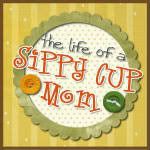I suppose I should have put a disclaimer before my post. Canning butter is not officially recommended by the National Center for Home Preservation. You do have to be immensely careful when canning, and using a pressure cooker would also alleviate error....so looking more into it online, I found information from both sides of the story--you be the judge. My sister made the comment that the Amish have been doing it forever...and they're still around...although because this blog is mainly for my own learning experience...I would not attempt this alone (without an experienced canner) because I have never done this before.
As for the comment about texture, this is what one man wrote:
I have made butter this way quite a few times. My wife and 2 kids cannot tell the difference, it does still taste like butter. We have also used it for cooking without any problems just like regular butter. We keep jars in the RV as they do not need refrigeration, one less thing to load and unload and keeps the fridge room open.
Canned butter does not "melt" again when opened, so it does not need to be refrigerated upon opening, provided it is used within a reasonable length of time.
Yes you can 'can' butter but it is much much better and easier and so much tastier of you order it from Australia. The butter and cheese for that matter will last about 20 years on the shelf.
Here's another view of canning butter:
We canned butter and though after 1 year it was not 'bad' it looked gross. So yes you can but there is a better way. I will have to get the company and it is shipped out of California. It is the best both the cheese and the butter. Commercially canned it safer, esp. with working with butter.
This is from the National Center for Home Preservation:
http://www.uga.edu/nchfp/questions/FAQ_canning.html#33
there are some directions for 'canning' butter in circulation on the Internet. Most of what we have seen are not really canning, as they do not have Boiling Water or Pressure Canning processes applied to the filled jar. Jars are preheated, the butter is melted down and poured into the jars, and the lids are put on the jars. Some directions say to put the jars in the refrigerator as they re-harden, but to keep shaking them at regular intervals to keep the separating butter better mixed as it hardens. This is merely storing butter in canning jars, not ‘canning’. True home canning is when the food is heated enough to destroy or sufficiently acid enough to prevent growth of all spores of Clostridium botulinum (that causes botulism) and other pathogens during room temperature storage on the shelf.
Additionally, when you consider the economics of the process (energy costs involved with heating, cost of jars and lids, etc.), even if the butter is bought on sale, it may not be economically viable to prepare butter to store for years in this manner. Good quality butter is readily available at all times, if butter is needed for fresh use. If the concern is about emergency food supplies, there are dry forms of butter that can be purchased and stored, oils that can be used in an emergency, or commercially canned butter in tins (although we have only seen this for sale from other countries). Melted and re-hardened butter may not function the same as original butter in many types of baking anyway.
There are a few issues with the common directions circulating on the Internet at this time:
1. Physical safety and food quality: In the provided directions, the jars are preheated in an oven (dry-heat), which is not recommended for canning jars. Manufacturers of canning jars do not recommend baking or oven canning in the jars. It is very risky with regard to causing jar breakage. There is no guarantee that the jars heated in this dry manner are sufficiently heated to sterilize them, as we do not have data on sterilizing jar surfaces by this dry-heating method.
2. The butter is not really being 'canned'; it is simply being melted and put in canning jars, and covered with lids. Due to some heat present from the hot melted butters and preheated jars, some degree of vacuum is pulled on the lids to develop a seal. It rarely is as strong a vacuum as you obtain in jars sealed through heat processing. The practice in these 'canned' butter directions is referred to as 'open-kettle' canning in our terminology, which is really no canning at all, since the jar (with product in it) is not being heat processed before storage.
3. Although mostly fat, butter is a low-acid food. Meat, vegetables, butter, cream, etc. are low-acid products that will support the outgrowth of C. botulinum and toxin formation in a sealed jar at room temperature. Low-acid products have to be pressure-canned by tested processes to be kept in a sealed jar at room temperature. It is not clear what the botulism risk is from such a high-fat product, but to store a low-acid moist food in a sealed jar at room temperature requires processing to destroy spores. A normal salted butter has about 16-17% water, some salt, protein, vitamins and minerals. Some butter-like spreads have varying amounts of water in them. We have no kind of database in the home canning/food processing arena to know what the microbiological concerns would be in a butter stored at room temperature in a sealed jar. In the absence of that, given that it is low-acid and that fats can protect spores from heat if they are in the product during a canning process, we cannot recommend storing butter produced by these methods under vacuum sealed conditions at room temperature.
4. Some other directions do call for 'canning' the filled jars of butter in a dry oven. This also is not 'canning'. There is not sufficient, research-based documentation to support that 'canning' any food in a dry oven as described on this web page or any page that proposes oven canning is even sufficient heating to destroy bacteria of concern, let alone enough to produce a proper seal with today's home canning lids.
In conclusion, with no testing having been conducted to validate these methods, we would NOT recommend or endorse them as a safe home-canning process, let alone for storing butter at room temperature for an extended period. We do know that the methods given for preheating empty jars, or even filled jars, in a dry oven are not recommended by the jar manufacturers or by us for any food. Aside from the physical safety and quality issues, and the fact that it is not canning at all, if there happened to be spores of certain bacteria in there, these procedures will not destroy those spores for safe room temperature storage.
So there you have it. I think the point that my sister made to her enrichment class, as well as mine in this post, was to showcase a not-so-common canning commodity that would be used in times of emergency. I wouldn't recommend just canning it for everyday use...also, when you go to open the jar...youre going to know if something's wrong with it by look, texture and smell. If it looks questionable, toss it!
I did look into ghee (clarified butter) which is also a pretty interesting process....and I think more "accepted" as far as canning goes.



















































































































































